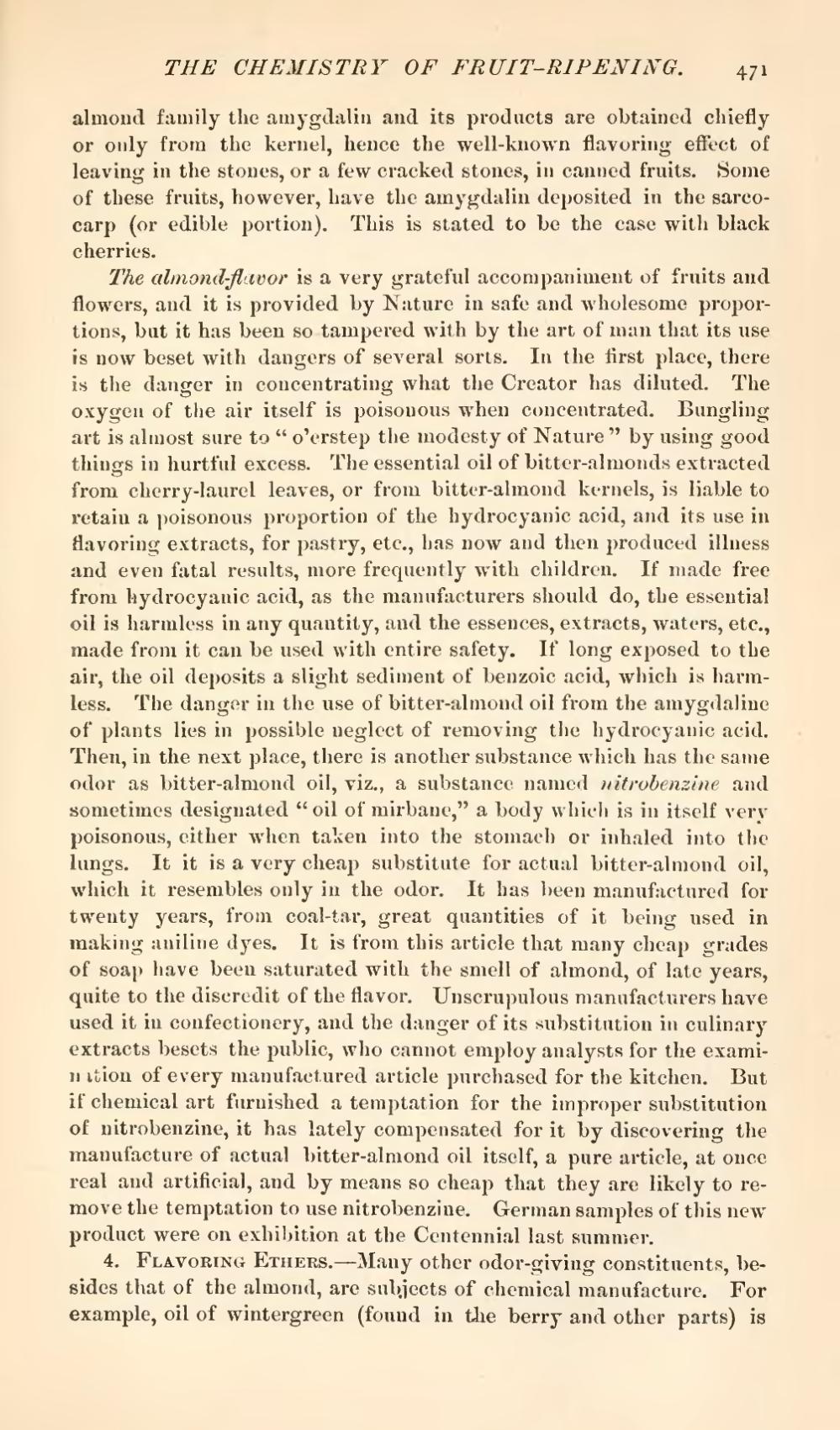almond family the amygdalin and its products are obtained chiefly or only from the kernel, hence the well-known flavoring effect of leaving in the stones, or a few cracked stones, in canned fruits. Some of these fruits, however, have the amygdalin deposited in the sarcocarp (or edible portion). This is stated to be the case with black cherries.
The almond-flavor is a very grateful accompaniment of fruits and flowers, and it is provided by Nature in safe and wholesome proportions, but it has been so tampered with by the art of man that its use is now beset with dangers of several sorts. In the first place, there is the danger in concentrating what the Creator has diluted. The oxygen of the air itself is poisonous when concentrated. Bungling art is almost sure to "o'erstep the modesty of Nature" by using good things in hurtful excess. The essential oil of bitter-almonds extracted from cherry-laurel leaves, or from bitter-almond kernels, is liable to retain a poisonous proportion of the hydrocyanic acid, and its use in flavoring extracts, for pastry, etc., has now and then produced illness and even fatal results, more frequently with children. If made free from hydrocyanic acid, as the manufacturers should do, the essential oil is harmless in any quantity, and the essences, extracts, waters, etc., made from it can be used with entire safety. If long exposed to the air, the oil deposits a slight sediment of benzoic acid, which is harmless. The danger in the use of bitter-almond oil from the amygdaline of plants lies in possible neglect of removing the hydrocyanic acid. Then, in the next place, there is another substance which has the same odor as bitter-almond oil, viz., a substance named nitrobenzine and sometimes designated "oil of mirbane," a body which is in itself very poisonous, either when taken into the stomach or inhaled into the lungs. It it is a very cheap substitute for actual bitter-almond oil, which it resembles only in the odor. It has been manufactured for twenty years, from coal-tar, great quantities of it being used in making aniline dyes. It is from this article that many cheap grades of soap have been saturated with the smell of almond, of late years, quite to the discredit of the flavor. Unscrupulous manufacturers have used it in confectionery, and the danger of its substitution in culinary extracts besets the public, who cannot employ analysts for the examination of every manufactured article purchased for the kitchen. But if chemical art furnished a temptation for the improper substitution of nitrobenzine, it has lately compensated for it by discovering the manufacture of actual bitter-almond oil itself, a pure article, at once real and artificial, and by means so cheap that they are likely to remove the temptation to use nitrobenzine. German samples of this new product were on exhibition at the Centennial last summer.
4. Flavoring Ethers.—Many other odor-giving constituents, besides that of the almond, are subjects of chemical manufacture. For example, oil of wintergreen (found in the berry and other parts) is
